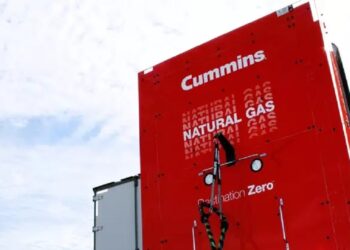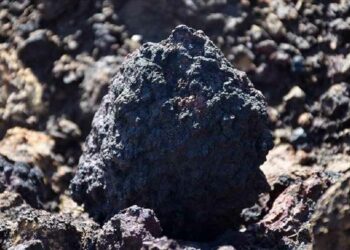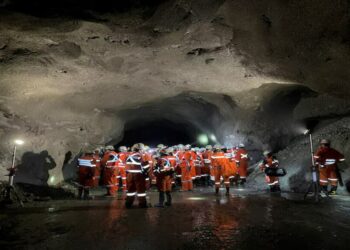The four-year-long bear market in metals stocks has resulted in an historic opportunity for investors, says Rick Mills, the owner and host of Ahead of the Herd.com. In this interview with The Gold Report, he explains that gold and other metals must rise as supply falls, so that when the market finally turns, those companies that have continued to increase shareholder value will reward shareholders many-fold. And he highlights four companies poised to do just that.
Four exploration and development companies Rick Mills believes will trhive in tough times
The Gold Report: Last month, the price of gold reached a five-year low near $1,140/ounce ($1,140/oz). Then it rose quickly to over $1,200/oz. Does this tell you the bottom is finally in?
Rick Mills: Gold will probably remain, in the short term, somewhere between $1,000/oz and $1,200/oz. Medium term, when people realize the Federal Reserve cannot raise interest rates and the global economy has serious problems, gold will rise.
TGR: The last time we spoke, you said, “Federal Reserve Chair Janet Yellen has more to do with the price of gold than anything else going on in the world today.” That being the case, what do you make of her recent remarks about losing “patience” and raising interest rates?
RM: Yellen’s impatience reflects a concern regarding low to zero inflation. If rising interest rates are needed to curb inflation, yet there is no inflation, why would Yellen raise rates?
If Yellen does raise rates, that will mean a continuing strong U.S. dollar, and that’s not something I suspect the U.S. really wants to see considering the recent poor earnings statements from the S&P 500. They have been a disaster, and they’re going to get worse as long as the dollar stays strong or gets stronger.
TGR: Over the past four years, metals stocks have performed poorly, even as we have seen enormous growth in the S&P 500 and the broader equity markets in general. Now we are seeing tremendous volatility in the equity markets, which has led some observers to suggest we have a bubble about to burst. What do you think?
RM: The multinationals listed on the S&P 500 have a lot of overseas earnings, which now come in the form of much weaker currencies because of currency wars. When these earnings are brought home to the U.S., they are converted into U.S. dollars, resulting in the earnings rout I just mentioned. This will not stop as long as the U.S. dollar stays so strong, so I do see the S&P going south.
TGR: In January, you quoted Randgold Resources Ltd.’s (GOLD:NASDAQ; RRS:LSE) CEO Mark Bristow, “The gold mining industry [is] fundamentally broke at a gold price of $1,300/oz.” If true, doesn’t this mean that either the price rises above $1,300/oz, or most gold companies close shop?
RM: Absolutely. I have previously written regarding all-in sustaining costs (AISC), which is the new reporting metric for gold miners. AISC does not include costs such as project capital, dividends, working capital, taxes, financing and interest charges on debt, costs related to business combinations, asset acquisitions and asset disposals, and items needed to normalize earnings (i.e., stock options, charges for discontinued operations). With gold currently selling for US$1,200/oz, gold miners with AISCs as low as $1,000/oz are not making money, and this is not sustainable.
The producers have reacted to the collapse of the gold price by high-grading deposits, and the explorers have slashed their exploration budgets by 60%. High grading and cost-cutting will result in falling production and reserves.
TGR: Meanwhile, we have tremendous physical gold demand from Asia, and the central banks are buying and not selling gold. Doesn’t the law of supply and demand tell us to expect a substantial increase in the price of bullion within the next two or three years?
RM: Demand for gold exceeds mined supply; this situation is going to get worse so I would suggest that you’re right.
TGR: Where do you see the prices of silver, nickel and copper going in 2015?
RM: I wish I had a crystal ball; I don’t, so I quit predicting prices some time ago. All I’ll say now is that given the global economic fundamentals, and my expected lower U.S. dollar, I don’t expect any of these metals prices to go lower than the low they just reached and came back up off of.
TGR: What is your favorite silver junior?
RM: Kootenay Silver Inc. (KTN:TSX.V). Kootenay has two projects in Sonora, Mexico: Promontorio and La Negra. They are contained in a 25 kilometer (25km) by 15km mineralized corridor known as the Promontorio mineral belt. The Promontorio deposit itself is an absolute monster: 92 million ounces (92 Moz) of silver equivalent Measured and Indicated and another 24 Moz Inferred at 70 grams/ton (70 g/t).
Kootenay doesn’t quite yet understand the Promontorio structure, so it is engaged in a very detailed mapping and sampling program to find the high-grade areas. But this problem is not unusual with such structures. Consider AngloGold Ashanti Ltd.’s (AU:NYSE; ANG:JSE; AGG:ASX; AGD:LSE) Cripple Creek gold mine in Colorado. Like Promontorio, it is a diatreme. Cripple Creek was mined for decades before it found a 100 meter (100m) pipe that contained 8 Moz gold.
Promontorio is basically a 1.5km long mineralized area, so it requires a comprehensive program to delineate high-grade targets.
TGR: Given how big Promontorio is, why is Kootenay concentrating on La Negra?
RM: This is the reality of running a junior. You need to get the best bang for your buck. For Kootenay, that means La Negra. It’s 6km from Promontorio, and it’s an exciting, new, pure silver discovery. Last year, Kootenay drilled 3,100m in 25 HQ diameter core holes at La Negra. It was hugely successful—a series of outstanding, high-grade drill intercepts from surface, including:
LN 21-14 Containing from surface and bottomed in mineralization:
156.47 g/t Ag over 200m including
20.34 g/t Ag over 50m from 150 to 200m including
1,337.66 g/t Ag over 6m and
92.30 g/t Ag over 17m at the bottom of the hole excluding the 6m of 1,337 g/t Ag interval
I made a back-of-the-napkin calculation that La Negra phase 1 drilling revealed 20 Moz of pure silver—a conservative estimate on my part. The company is now drilling a phase 2, 30 hole, 3,000m program.
TGR: Kootenay announced initial phase 2 assays March 31. How good are they?
RM: They position La Negra as one of the richest, near-surface, pure silver plays in northwest Mexico in the past decade. The latest results, in my opinion, give an established silver producer(s) the opportunity to fast track into production a low-cost, 4–5 Moz/year mine.
Even if no one comes knocking, Kootenay has the team to advance the project itself. CEO Jim McDonald’s track record includes Alamos Gold Inc.’s (AGI:TSX) Mulatos mine, and director Dick Whittington’s track record includes Farallon Mining Ltd.’s (FAN:TSX) G-9 mine.
TGR: Agnico Eagle Mines Ltd. (AEM:TSX; AEM:NYSE) owns 10% of Kootenay. Would it be interested in a takeover?
RM: I would think so. There are not many pure silver mines with around 4–5 Moz/year of pure silver production over 8 to 10 years. That is very special.
TGR: Which junior nickel explorer is your favorite?
RM: I like North American Nickel Inc. (NAN:TSX.V) for the same reasons I like Kootenay. The company has put together one heck of a management team. It has been able to raise money all through the down cycle. It is being funded by its sister company, VMS Ventures Inc. (VMS:TSX.V). Funding is also being provided by the Sentient Group, which is an umbrella group, so that opens up other conduits to financing. It has $6 million ($6M) in its treasury and will raise more.
North American Nickel continues to advance its highly prospective Maniitsoq nickel-sulphide project in Greenland. It is going exploring this year, putting drill holes into the new targets identified last year and will drill some of the older targets to define resources. North American Nickel will also fly geophysics over new targets and will have boots on the ground doing an extensive mapping and sampling program. The drilling contract has been signed. The camp logistics contract is signed.
TGR: How does it stand for infrastructure?
RM: The company announced April 1 it is moving forward with its plan to buy the port of Seqi from LKAB Minerals, a subsidiary of Minelco AS, a Swedish iron producer. The port is a pier out into a deep-water fjord just a little farther up from its base camp.
When North American Nickel gets Seqi, fog is not going to be as much of a problem. Helicopter expenses will be quite a bit lower, and shipping will be possible year-round. To build or replace this pier and quay would cost about $50–60M. My understanding is that North American Nickel can take over the reclamation bond that was posted with the government. And the port would be a revenue stream should other companies decide to make use of it.
TGR: In February, North American Nickel made two management appointments. What’s the significance of this?
RM: It’s huge. Patricia Tirschmann, the new vice president of exploration, liked the project and wanted to come aboard; she’s an expert in nickel sulphide exploration. She then hired Sharon Taylor as chief geophysicist, again another inhouse expert hired. This shows you the quality of the people that an existing high-quality management team with a high-quality project attracts.
North American Nickel is a well-funded, well-managed company with serious backers working to find nickel sulphide. Such deposits are rare, and anything close to tidewater is even rarer. This company is building shareholder value.
TGR: Which junior gold explorer do you like?
RM: Theia Resources Ltd. (THH:TSX). This company shares management with Kootenay Silver. Kenneth Berry, Theia’s CEO, is chairman of Kootenay.
TGR: This is an early-stage company, right?
RM: Correct, very early but with outstanding results for such an early stage. It’s operating on the Nechako Plateau, northwest of Prince George, British Columbia, and has discovered two new precious metal systems, Fox and 2 X Fred.
Fox has strongly anomalous gold and silver values in surface grab samples and numerous anomalous mineral occurrences over 1 square km. The best mineralization is underlain by a 3km-long magnetic anomaly, and the alteration in mineralization indicates potential for a disseminated, high-grade type discovery.
2 X Fred has consistently anomalous gold with silver in the upper levels of a hot-spring epithermal gold system. Its composite grab samples averaged 0.38 g/t gold with all samples above 0.31 g/t. The geology and mineralization indicate potential for large, low-grade deposits and smaller, high-grade deposits.
TGR: What’s special about the Nechako Plateau?
RM: It’s elephant country, hosting such notables as the Endako molybdenum mine, the past-producing Equity silver mine and New Gold Inc.’s (NGD:TSX; NGD:NYSE.MKT) Blackwater deposit: 9.5 Moz gold and 70 Moz silver. The plateau is correlated with very large precious metal deposits.
Theia’s surface results were very impressive; if mineralization continues to depth, this is going to be a very spectacular play. It could potentially be seen as another Blackwater, and that means it’s going to have a lot of eyes on it, including people who have been successful here in the past. The company will raise money this spring and explore its properties with the aim of doing a phase 1 drill program. Everybody should have this one on their radar screens for an exciting, early stage gold exploration play.
TGR: Finally, you wanted to mention a diamond company.
RM: Strike Diamond Corp. (SRK:TSX.V) is exploring it’s large tenure in the North Saskatchewan Craton Diamond Play. In 2013, North Arrow Minerals Inc. (NAR:TSX.V) released news that it had hit kimberlite. Later that year, it released some pretty spectacular diamond counts. A just-over 200 kilogram (200 kg) sample from PK150 returned 23 commercial-sized diamonds: stones larger than a 0.85 millimeter (0.85 mm) sieve, an amazing return from 200 kg. This led to a staking rush by many juniors. Strike was one of these companies.
The diamond count that this company had released was spectacular, but, unfortunately, everybody thought the diamonds came from a small dike.
TGR: On March 30, North Arrow released news that totally changed how investors should look at this play. What makes North Arrow’s news so important?
RM: North Arrow drilled seven holes into PK150, the “dike” in which it found the diamonds. North Arrow has now extended the kimberlite at PK150 to a strike length of 150m and to a depth of 200m below surface, and it’s open to the east and to depth.
North Arrow also announced it has changed the classification or the texture of the kimberlite to a pyroclastic kimberlite. This changes the whole complexion of the North Sask Craton Diamond Play play. It has changed from what people thought was a play that had good grade and good chemistry but were dikes too small to be of economic interest, into a play characterized by diatremes that come with large size connotations.
North Arrow also announced three new discoveries. One of them, PK314, is described as a diatreme-like body. PK314 displays textures coincident to pyroclastic kimberlite, which is diatreme-facies kimberlite—as opposed to the purely hypabyssal textural features that characterize dike-like bodies.
TGR: Why is North Arrow’s news such good news for Strike?
RM: Strike announced news on March 30 as well. It reported on kimberlite-indicator mineral-sampling results from its tenures to the northeast and to the southwest of North Arrow’s Pikoo play. The results from its regional, first-pass, limited-in-number till sampling program were excellent. Strike believes it has already discovered four potential kimberlite indicator mineral dispersion trains on its property.
Strike has a low, publicly available float with a low share price and the largest landholding in the play where a dozen or more indicator trains have already been discovered. For investors seeking speculation on diamond exploration, Strike potentially has tremendous upside.
TGR: You are fond of pointing out that investors realize the greatest leverage from a rising bullion price from owning gold equities rather than owning bullion. Today, even after the four-year bear market, there are still hundreds of zombie companies on the TSX Venture Exchange. With so many juniors now trading under $0.20/share, how can investors seeking leverage distinguish between the moribund companies and those that will flourish?
RM: Investors need to spend the time doing due diligence. They must constantly educate themselves about the market and companies individually.
Investors should find those companies that, even over these last four difficult years, are still raising capital, keeping a strong balance sheet, advancing their projects and building shareholder value. The share prices of such companies are like a spring, and the tension grows ever stronger as their share prices remain at today’s low valuations. When the market finally turns, this spring will move with tremendous force, and investors in those companies will reap great rewards.
TGR: Rick, thank you for your time and your insights.
Rick Mills 2015Rick Mills is the owner and host of www.Aheadoftheherd.com and invests in the junior resource sector. His articles have been published on over 400 websites.
Want to read more Gold Report interviews like this? Sign up for our free e-newsletter, and you’ll learn when new articles have been published. To see recent interviews with industry analysts and commentators, visit our Streetwise Interviews page.
DISCLOSURE:
1) Kevin Michael Grace conducted this interview for Streetwise Reports LLC, publisher of The Gold Report, The Energy Report, The Life Sciences Report and The Mining Report, and provides services to Streetwise Reports as an independent contractor. He owns, or his family owns, shares of the following companies mentioned in this interview: None.
2) The following companies mentioned in the interview are sponsors of Streetwise Reports: Kootenay Silver Inc. and North American Nickel Inc. The companies mentioned in this interview were not involved in any aspect of the interview preparation or post-interview editing so the expert could speak independently about the sector. Streetwise Reports does not accept stock in exchange for its services.
3) Rick Mills: I own, or my family owns, shares of the following companies mentioned in this interview: Strike Diamond Corp. I personally am, or my family is, paid by the following companies mentioned in this interview: None. My company has a financial relationship with the following companies mentioned in this interview: Kootenay Silver Inc., North American Nickel Inc., Theia Resources Ltd. and Strike Diamond Corp. I was not paid by Streetwise Reports for participating in this interview. Comments and opinions expressed are my own comments and opinions. I determined and had final say over which companies would be included in the interview based on my research, understanding of the sector and interview theme. I had the opportunity to review the interview for accuracy as of the date of the interview and am responsible for the content of the interview.
4) Interviews are edited for clarity. Streetwise Reports does not make editorial comments or change experts’ statements without their consent.
5) The interview does not constitute investment advice. Each reader is encouraged to consult with his or her individual financial professional and any action a reader takes as a result of information presented here is his or her own responsibility. By opening this page, each reader accepts and agrees to Streetwise Reports’ terms of use and full legal disclaimer.
6) From time to time, Streetwise Reports LLC and its directors, officers, employees or members of their families, as well as persons interviewed for articles and interviews on the site, may have a long or short position in securities mentioned. Directors, officers, employees or members of their families are prohibited from making purchases and/or sales of those securities in the open market or otherwise during the up-to-four-week interval from the time of the interview until after it publishes.
Streetwise – The Gold Report is Copyright © 2014 by Streetwise Reports LLC. All rights are reserved. Streetwise Reports LLC hereby grants an unrestricted license to use or disseminate this copyrighted material (i) only in whole (and always including this disclaimer), but (ii) never in part.
Streetwise Reports LLC does not guarantee the accuracy or thoroughness of the information reported.
Streetwise Reports LLC receives a fee from companies that are listed on the home page in the In This Issue section. Their sponsor pages may be considered advertising for the purposes of 18 U.S.C. 1734.
Participating companies provide the logos used in The Gold Report. These logos are trademarks and are the property of the individual companies.








